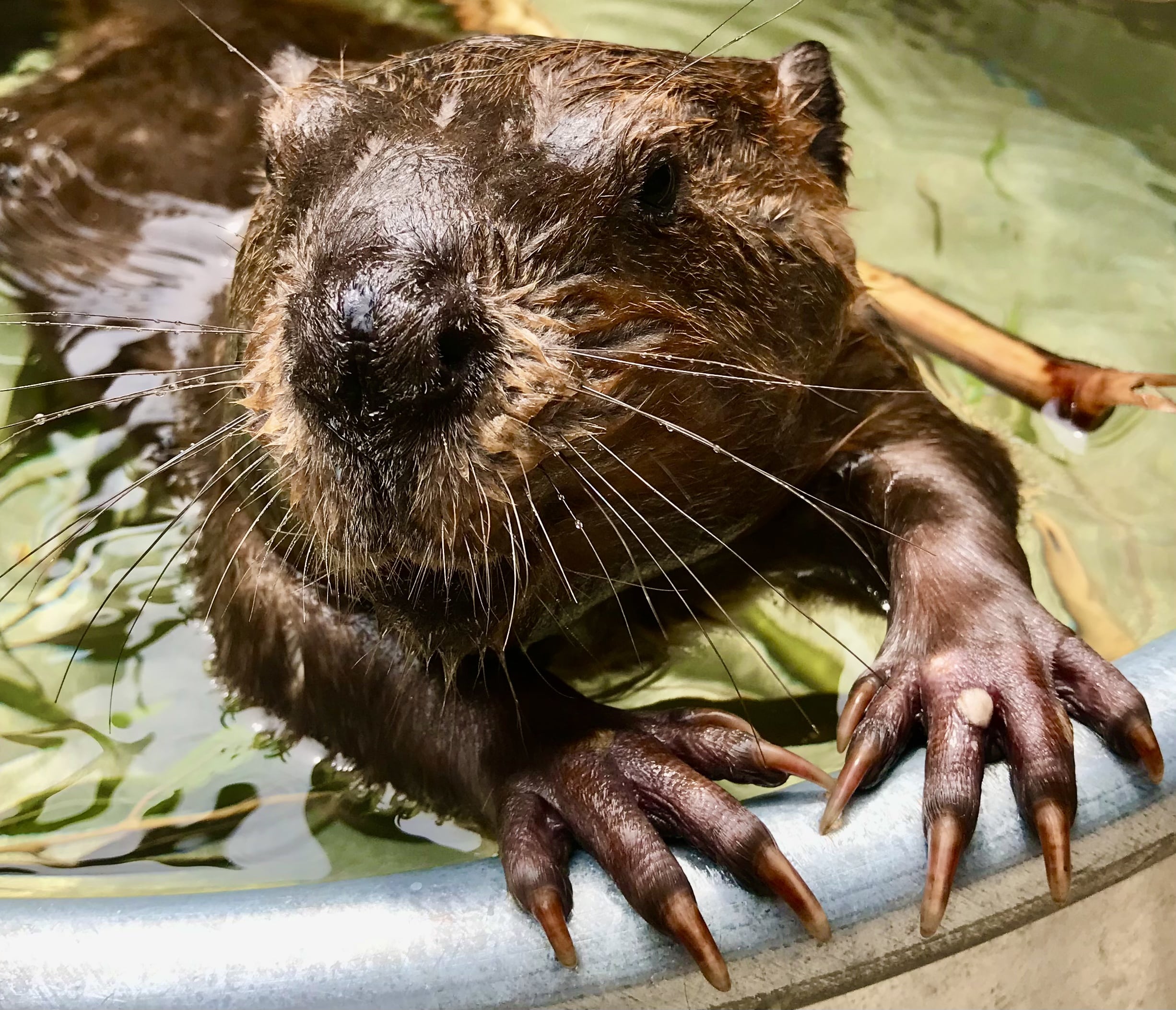When Dr. Holley Muraco, a world-renowned dolphin expert, was growing up in the small town of Potts Camp she developed a deep love for animals — big, small, land, and aquatic.
“Every animal is really special and unique,” Muraco said.

But she never dreamed her affection for the myriad of woodland creatures she brought home to her family cow farm in rural Marshall County would ever lead to a decades-long career with marine life and now, saving orphaned baby beavers.
“Never in my wildest dreams did I think I’d be here, and beavers would be part of my life,” Muraco said laughing as she held one of her latest rescues, a three-month-old beaver named Turnip. Turnip was shy and cuddled in Muraco’s lap like a bashful toddler seeking the comforting embrace of his mother.
“I just fell in love with these guys, and I really never expected to,” she said. Muraco even has a YouTube channel dedicated to her little guests where you can check out videos of their escapades.
Muraco has traveled the world researching dolphins and other marine animals and currently lives in Long Beach. She was tapped as director of research for the Mississippi Aquarium in Gulfport in 2019.
A few years ago, Muraco’s dear friend, Paula Woodside of Woodside Wildlife Rescue, asked if she would be willing to become an off-campus wildlife rehabber and help out with three baby orphaned beavers. Muraco had never had any experience with beavers but jumped at the chance to house and care for the three babies.
“I had no idea what I was getting into,” she said. “Because there is just not that much information out there about them, which is crazy because this is literally the animal that built America with the fur trade and has been the most incredible environmental engineer. We know nothing about their behavior. Nothing about their physiology or their production in the grand scheme of things. Humans, elephants, and beavers can all change the world.”
Her first three orphaned beaver babies — Huck, Finn, and Sawyer — have since grown enough to be relocated, and the crash course she gained in raising them helped prepare her for her latest rescues, Tator and Turnip. Both are about three months old but are not siblings and have very different backstories.
Muraco explained that Turnip, the shy beaver, was found by a woman in north Mississippi. Experts believe Turnip was just a few days old and the woman was planning to keep Turnip as a pet.
“She thought he was cute,” Muraco said. “She kept him for five days, feeding him only apple slices.”
By the time the woman decided to surrender Turnip to a wildlife rescue facility, he was in dire medical distress with severe weight loss and several infections, including pneumonia.
“He had a rough start to life, but he’s coming out of his shell,” she said as she nuzzled his nose.
Tator was also found in north Mississippi but in the mouth of a dog. The person who saved the infant beaver immediately contacted a wildlife rescue, and luckily, Tator did not have any life-threatening injuries. And he has a very different demeanor than Turnip.
Tator did not mind sitting in a stranger’s lap as long as there was a nearby bowl with chunks of sweet potatoes. He calmly, although a bit wiggly, munched the sweet potato chunks and when one was devoured, he would reach for another and make a soft, whining alert noise that implied he was ready for another snack.
“They definitely have completely different personalities,” Muraco said.
Despite having a wire-looking appearance, their fur is surprisingly soft, almost bunny-like, and their vision is slightly impaired on land. They have a special waterproof eye lens, almost like a pair of goggles, that allows them to see expertly underwater and build lodges. Their digitated forepaws are composed of five tiny fingers with nails that resemble those of a dog, and their feet are webbed for swimming. Their tails, which are for fat storage and serve as a rudder and paddle, have the texture of a leather belt and are extremely flexible. They are extraordinarily tidy animals, constantly moving and being busy. Beavers have a lifespan of about 25 years and can weigh up to 75 pounds.
“But the largest on record was over 100 pounds,” she said.
Muraco has a large, galvanized drum filled with water and several willow limbs so Tator and Turnip can develop cleaning and lodge-building skills. Their diet consists of the branches of young trees, kale, broccoli, Brussels sprouts, green beans, rodent chow, and of course, their favorite, sweet potatoes.
In the short time Muraco has been caring for Tator and Turnip they’ve bonded, and not only with each other, but with Muraco and her husband, Mike, and their sons, Jordan and Colton.
Muraco said beavers have been deemed nuisance animals in the Magnolia State, but she wants people to know they actually have a lot to teach us if we would just let them.
“We need to learn to live with nature,” she said. “And even though beavers are difficult, and it might be complicated to let them share human space — it’s so worth it.”
Tator and Turnip will stay with the Muraco family for at least two years, maybe longer.
And the family has an entire pack of rescue animals including Phoebe, a 22-year-old African grey; Pinkachu, a 13-year-old rose-breasted cockatoo; Rudy, a 30-year-old green-wing macaw; Cher, a 50-year-old scarlet macaw; Yuki, a 6-year-old green cheeked conquer; two cats, Pluto and Mars; and two dogs, Eevee and Luna. The family also has Grogu, a baby box turtle, and Sunshine, a Florida king snake.
This is the first of a two-part series about the career of Dr. Holley Muraco. She also has an exciting life on the water as a marine biologist and was featured in a walrus documentary.